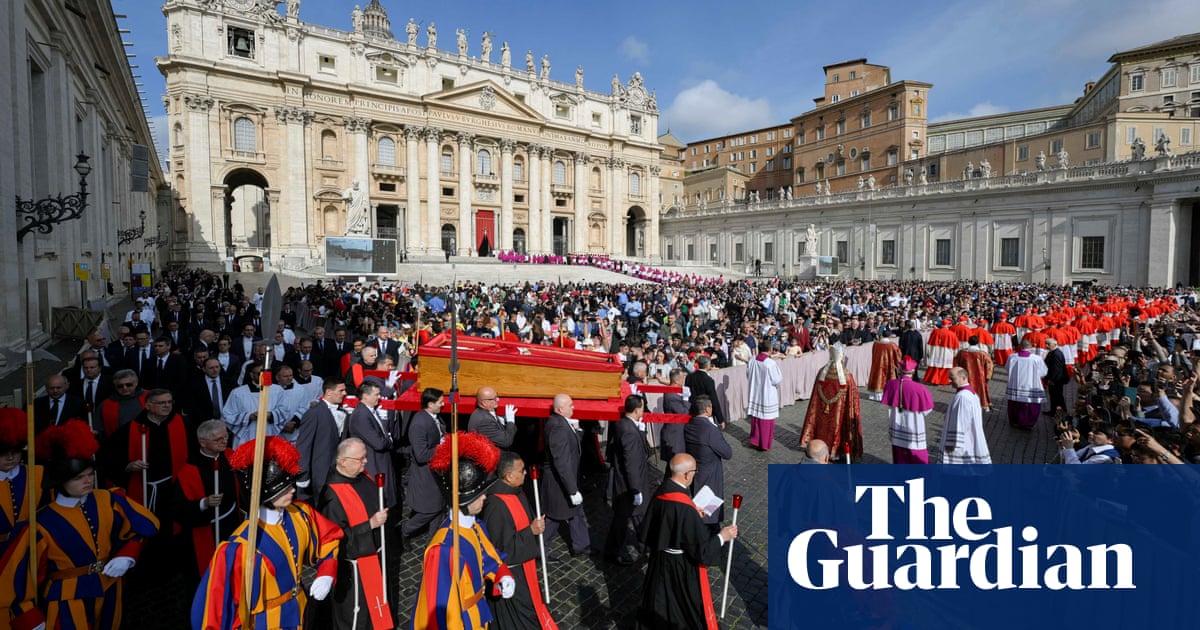Despite Pope Francis’s desire for asimple and comparatively low-key send-off, those tasked with organising and delivering the funeral of the 266th bishop of Rome still face a vast array of logistical, technological and security challenges.
With as many as 170 foreign delegations – including those of Donald Trump, Volodymyr Zelenskyy and Prince William – expected to descend on theVaticanfor Saturday’s funeral, along with crowds of up to 200,000 people, those overseeing the event are in for a hyper-vigilant few days.
The security operation will be further complicated by the fact that the Liberation Day public holiday, which marks Italy’s freeing from fascism and Nazi occupation at the end of the second world war, falls on Friday, bringing with it a host of separate events and demonstrations.
Italy’s interior minister, Matteo Piantedosi, said the authorities were working on the basis that between 150 and 170 foreign delegations would attend the outdoor funeral in St Peter’s Square, along with tens of thousands of the faithful.
Barriers have already been installed inside and outside the basilica to control the crowds, security checks have been increased and staff have been distributing bottles of water due to the warm weather.
According toCorriere della Serra, state-of-the-art defence and security mechanisms are being deployed across Rome and in the skies above the capital, including anti-drone weaponry, a no-fly zone patrolled by fighter jets, and sophisticated jamming technologies. Anti-terrorism and anti-sabotage units are also already on the ground.
The basilica and the surrounding area are being patrolled by more than 2,000 police officers between now and the end of the conclave that is expected to take place early next month to choose Francis’s successor. They will be supported by 400 traffic police officers who will help manage the movement of the diplomatic convoys.
Saturday’s funeral will conclude with the late pontiff’s coffin being taken, in procession, from St Peter’s Basilica to the Santa Maria Maggiore basilica in Rome’s Esquilino neighbourhood, where Francis will be buried.
But the security operation will not end with that final journey. Once Francis has been laid to rest, attention will swiftly turn to the conclave. Should an Italian cardinal be chosen as the 277th leader of the Roman Catholic church, police are bracing for even greater numbers of the faithful to head for the Vatican.
Sign up toHeadlines Europe
A digest of the morning's main headlines from the Europe edition emailed direct to you every week day
after newsletter promotion
About 50,000 people attended thefuneral of Francis’s predecessor, Pope Benedict, which was also held in St Peter’s Square, in January 2023.
The state funeral of Queen Elizabeth II in Westminster Abbey in September 2022 was attended by about 500 foreign dignitaries, including the then US president, Joe Biden. More than 10,000 police officers were on patrol for the event,which was describedas the UK police’s largest-ever single deployment, as well as the biggest international event for foreign dignitaries coordinated by the Foreign Office.
More than 3,000 other officers from almost every force in the country were drafted in to help police in London. Armed police, motorbike escort riders, officers carrying out patrols on horseback, dog teams and the marine unit were among the specialist teams deployed. Rooftop snipers were in place while the late queen’s cortege was moving, which was accompanied by a helicopter escort anywhere outside the capital.
